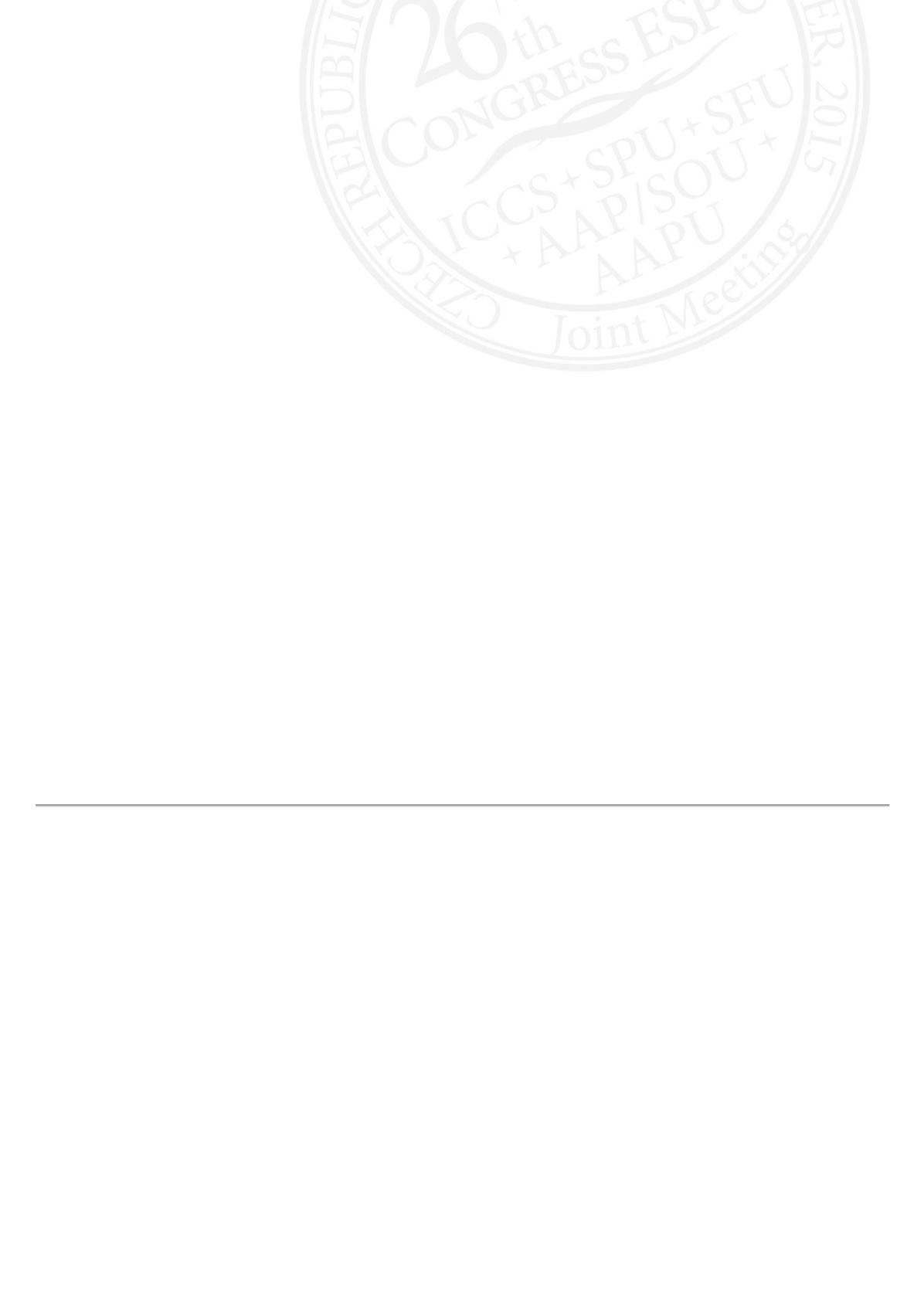

13:58 - 14:01
S9-3
(PP)
★
POSTURAL THERAPY FOR RENAL STONES IN CHILDREN: A ROLLING STONES
PROCEDURE
Alice FAURE
1
, Geraldine HERY
2
, Nicoleta PANAIT
2
, Eugenie DICROCCO
3
, Pierre ALESSANDRINI
2
, Thierry MERROT
2
and
Jean-Michel GUYS
2
1) Aix-Marseille university-APHM, Paediatric Urology Department, Marseille, FRANCE - 2) Aix-Marseille University-APHM,
Pediatric surgery department, Marseille, FRANCE - 3) Aix-Marseille University-APHM, Urology Department, Marseille,
FRANCE
PURPOSE
Despite many advances, the management of lower caliceal stones (LCS) remains a challenge. The gravity-dependant
location of the lower calixes hinders the spontaneous clearance of fragments that can be the nidus for future growth and
symptomatic recurrence. We report our preliminary experience and effectiveness of mechanical percussion diuresis and
inversion (PDI) therapy for eliminating LCS.
MATERIAL AND METHODS
Since November 2013, children with residual fragments (after SWL or URS) or native symptomatic LCS were
prospectively include into a protocol of 4 PDI sessions. After informed consent, according to the local ethic committee,
children drank 500ml of water 1h before therapy. They then laid in a prone Trendelembourg position on a 45°-angle
couch, and received continuous 10-minute mechanical percussion applied over the affected flank by a physiotherapist.
Tolerance and stone clearance were documented with ultrasound 4-weeks following PDI.
RESULTS
Seventy-two PDI sessions were performed in 14 candidates at a mean age of 11.6 years (18m-18y) in 16 months.
Median stone diameter was 5.4mm (3-9). Four children had bilateral stones. Nine children (64%) who experienced
symptomatic episodes required PDI as the first step of management. The overall stone-free rate was 66%. Three of the
5 patients who previously underwent SWL/URS passed fragments. Patients who did not become stone-free by PDI had a
decrease in stone-area of 56% (95%IC 34%-69%). No significant adverse effects were noted. Observance rate was
100%.
CONCLUSIONS
PDI is safe and effective for facilitating gravity-dependant drainage of LCS. PDI provides an opportunity to treat children
in a quick, non-invasive, painless, non-radiative and diverting fashion. This therapy is a valuable alternative in the
pattern of stone management.












